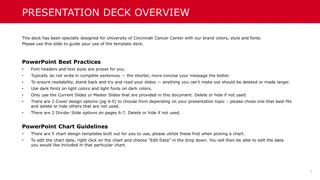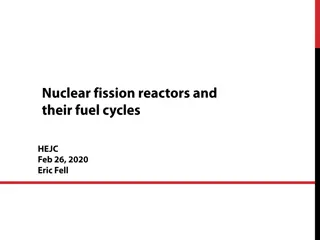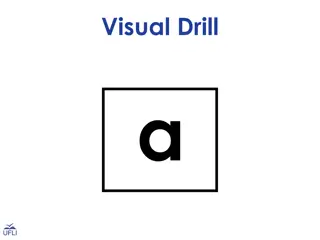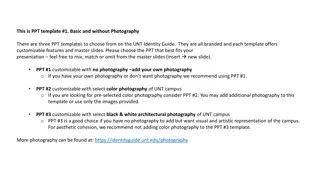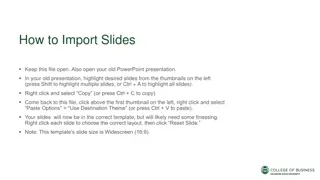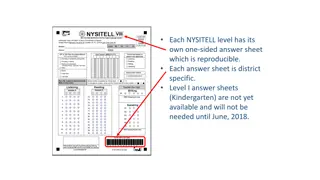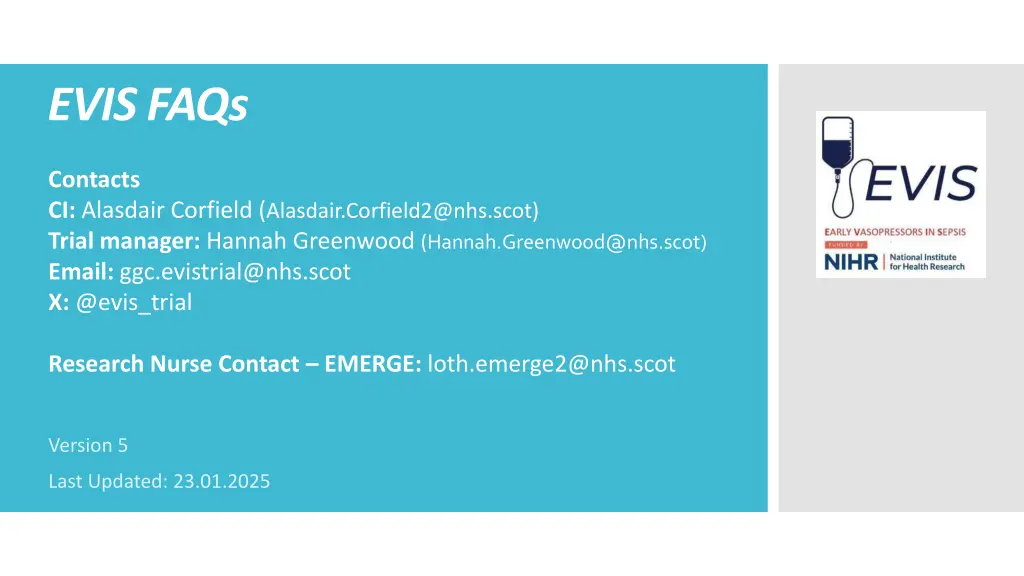
Norepinephrine Peripheral Infusion: Dosage Titration & Extravasation Guidelines
Explore comprehensive guidelines for preparing, administering, and titrating norepinephrine infusion in peripheral vasopressor therapy. Learn about dosage calculations, titration protocols, extravasation monitoring, and management strategies.
Download Presentation

Please find below an Image/Link to download the presentation.
The content on the website is provided AS IS for your information and personal use only. It may not be sold, licensed, or shared on other websites without obtaining consent from the author. If you encounter any issues during the download, it is possible that the publisher has removed the file from their server.
You are allowed to download the files provided on this website for personal or commercial use, subject to the condition that they are used lawfully. All files are the property of their respective owners.
The content on the website is provided AS IS for your information and personal use only. It may not be sold, licensed, or shared on other websites without obtaining consent from the author.
E N D
Presentation Transcript
EVIS FAQs Contacts CI: Alasdair Corfield (Alasdair.Corfield2@nhs.scot) Trial manager: Hannah Greenwood (Hannah.Greenwood@nhs.scot) Email: ggc.evistrial@nhs.scot X: @evis_trial Research Nurse Contact EMERGE: loth.emerge2@nhs.scot Version 5 Last Updated: 23.01.2025
Intervention Arm Norepinephrine should be prepared and delivered at a concentration of 16 micrograms/ml* Norepinephrine is 1mg/1ml concentrate for solution Using a 250ml infusion bag use 1 x 4ml* Using a 500ml infusion bag use 1 x 8ml* Concentration for NE infusion Please see IMP manual or Peripheral Norepinephrine Preparation and Administration Record.
Intervention Arm Please follow local policy or see the guidance in Appendix A and guidance on preparation and administration form The starting dose of the infusion is 0.05micrograms/kg/min For example for a 70kg patient this will be calculated as follows: 0.05 (starting dose) x 70kg = 3.5 micrograms per minute 3.5micrograms x 60 (minutes) = 210 micrograms per hour which is a flow rate of 13.1ml/hr Dosing/flow rate for NE infusion
Dose up Titration for Peripheral Vasopressor Infusion Use local policy if available Commence Norepinephrine at 0.05 micrograms/kg/min based on rounded weight in dosing guide table from Appendix A in protocol. Titration Aim for MAP 65mmHg (PLEASE NOTE: TARGET MAP IS GREATER THAN OR EQUAL TO 65) Norepinephrine dose may be increased in increments of 0.05 micrograms or at investigator discretion to achieve a target MAP 65 mmHg The maximum dose of norepinephrine is 0.15 micrograms/kg/min
Dose down Titration for Peripheral Vasopressor Infusion Use local policy if available If MAP is greater than 80mmHg for a sustained period of greater than 1 hour, consider down titration of PVI and then reassess. Titration The infusion may be decreased in increments of 0.05 micrograms/kg/min or as clinically indicated to achieve the target MAP with reassessment. Guidance is provided in Appendix A of the study protocol
Extravasation is a rare complication of Norepinephrine peripheral infusion Monitor, the infusion site on an hourly basis. Document the grade of extravasation using this table. Dealing with suspected extravasation of Norepinephrine (1)
Extravasation is a rare complication of Norepinephrine peripheral infusion If extravasation is suspected or the patient reports sustained pain at the infusion site then take the following actions: Dealing with suspected extravasation of Norepinephrine (2) Grades 1 or 2: Re-site the cannula and continue the norepinephrine infusion Grades 3 or 4: Stop the infusion and disconnect the infusion line from the cannula. Follow the step by step guidance heard in the voiceover or follow any local extravasation policy. Inform research team and continue to manage as per policy. Participant s treatment should revert back to usual care at site.
Patients in both arms of the study will receive intravenous fluids Intervention arm if target MAP not reached once maximum titrated dose of 0.15 micrograms/kg/min has been reached or clinician concerns of organ hypo perfusion, then resuscitation IV fluids 250-1000mls boluses of balanced crystalloid can be administrated. Maintenance fluids can be given once resuscitation fluids are complete, at a Rate no more than 125ml/hour. Recording IV fluids accurately The volume of IV fluids is valuable data that the research team will collect From randomisation to 72 hours. Please ensure fluid balance charts are completed and volume of fluid is documented accurately.
Control arm - Participants allocated to the control arm will receive standard care as defined by the UK NICE guidelines and the Surviving Sepsis Campaign Guidelines during the 48 hour study period post randomisation. Maintenance fluids can be given once resuscitation fluids are complete, at a Rate no more than 125ml/hour. Recording IV fluids accurately The volume of IV fluids is valuable data that the research team will collect From randomisation to 72 hours. Please ensure fluid balance charts are completed and volume of fluid is documented accurately.
Important for study data that flow rates and infusion start and stop times for peripheral norepinephrine are accurately recorded. A template Peripheral norepinephrine Preparation & Administration Record is available but check with research team what is being used at your site Recording start stop times for Norepinephrine infusion correctly


